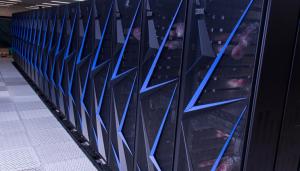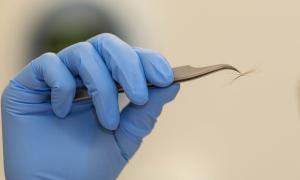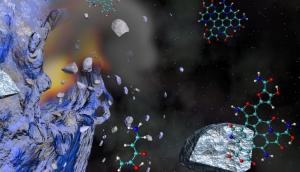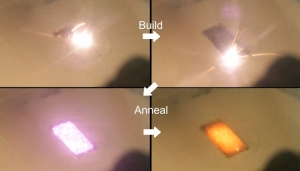LAB REPORT
Science and Technology Making Headlines
July 12, 2019


LLNL’s Sierra is ranked the second fastest supercomputer in the world.
Exploring the Sierra supercomputer
Lawrence Livermore National Laboratory is home to several supercomputers, including Sierra, the world's second fastest. These supercharged computers handle everything from virtual nuclear weapons tests to weather modeling.
A supercomputer can contain hundreds of thousands of processor cores and require an entire building to house and cool — not to mention millions of dollars to create and maintain them. But despite these challenges, more and more are set to go online as the United States and China develop new "exascale" supercomputers, which promise a five-fold performance boost compared to current leading systems.
Sierra is made up of 240 server-like racks that are processing data involving the U.S. nuclear stockpile, including how the weapons should detonate in the real world.
The U.S. conducted its last live nuclear weapons test in 1992. Since then, the country has used supercomputers to help carry out the experiments virtually, and Sierra is part of that mission. The machine was completed last year primarily to aid the U.S. government in monitoring and assessment of the effectiveness of the country's aging nuclear arsenal, which needs to be routinely maintained.


An LLNL team found that a single hair from anywhere on the human body can be used to identify a person.
A very hairy outcome
New research by LLNL scientists shows that a single one-inch strand of hair from anywhere on a person’s body can be used to identify a potential criminal. The biggest impact will be on sexual assault cases.
Soon law enforcement will only need a one-inch piece of hair that could be weighed and then dissolved.
Lawrence Livermore National Laboratory chemist Fanny Chu said, "We look to detect peptides which are smaller chunks of protein in the hairs. And we can link the peptides to individual genetic variations individuals have."
For the first time, it's not just hair from your head but hair from anywhere on your body. For a point of comparison, you used to need 100 times that inch of hair to yield the same results. This new science also adds 10 times the accuracy, or one in 10 million.


Cometary impacts can produce complex carbon-rich prebiotic materials from simple organic precursors such as the amino acid glycine. Image by Liam Kraus/LLNL
A jump-start on life
Comets screaming through the atmosphere of early Earth at tens of thousands of miles per hour likely contained measurable amounts of protein-forming amino acids. Upon impact, these amino acids self-assembled into significantly larger structures that are likely constituents of early life compounds.
Lawrence Livermore National Laboratory researchers explored the idea that the extremely high pressures and temperatures induced by shock impact can cause small biomolecules to condense into larger life-building compounds.
Glycine is the simplest protein-forming amino acid and has been detected in cometary dust samples and other astrophysical icy materials. However, the role that extraterrestrial glycine played in the origins of life is largely unknown, in part because little is known about its survivability and reactivity during impact with a planetary surface.
To address this question, the LLNL team used quantum simulations to model water-glycine mixtures at impact conditions reaching 480,000 atmospheres of pressure and more than 4,000 degrees Fahrenheit (approximating probable pressures and temperatures of a planetary impact). The intense heat and pressure caused the glycine molecules to condense into carbon-rich clusters that tended to exhibit a diamond-like, 3D geometry.


This image shows the process of building and annealing a rectangular block of stainless steel 316L.
Stressed out
In 3D printing, residual stress can build up in parts during the printing process due to the expansion of heated material and contraction of cold material, generating forces that can distort the part and cause cracks that can weaken a part to pieces, especially in metals.
Researchers at Lawrence Livermore and the University of California, Davis are addressing this problem by using laser diodes, high-powered lasers borrowed from technology created for LLNL's National Ignition Facility, to rapidly heat the printed layers during a build.
The new technique results in the reduction of effective residual stress in metal 3D-printed test parts by 90 percent, by enabling researchers to reduce temperature gradient and control cooling rates.


Switchgrass is used as a biomass crop for advanced biofuel production.
Turning the switch on biofuels
Plant cell walls contain a renewable, nearly limitless supply of sugar that can be used in the production of chemicals and biofuels. However, retrieving these sugars isn’t easy.
Imidazolium ionic liquid (IIL) solvents are one of the best sources for extracting sugars from plants. But the sugars from IIL-treated biomass are inevitably contaminated with residual IILs that inhibit growth in bacteria and yeast, blocking biochemical production by these organisms.
Lawrence Livermore National Laboratory scientists and collaborators at the Joint BioEnergy Institute have identified a molecular mechanism in bacteria that can be manipulated to promote IIL tolerance, and therefore overcome a key gap in biofuel and biochemical production processes.





